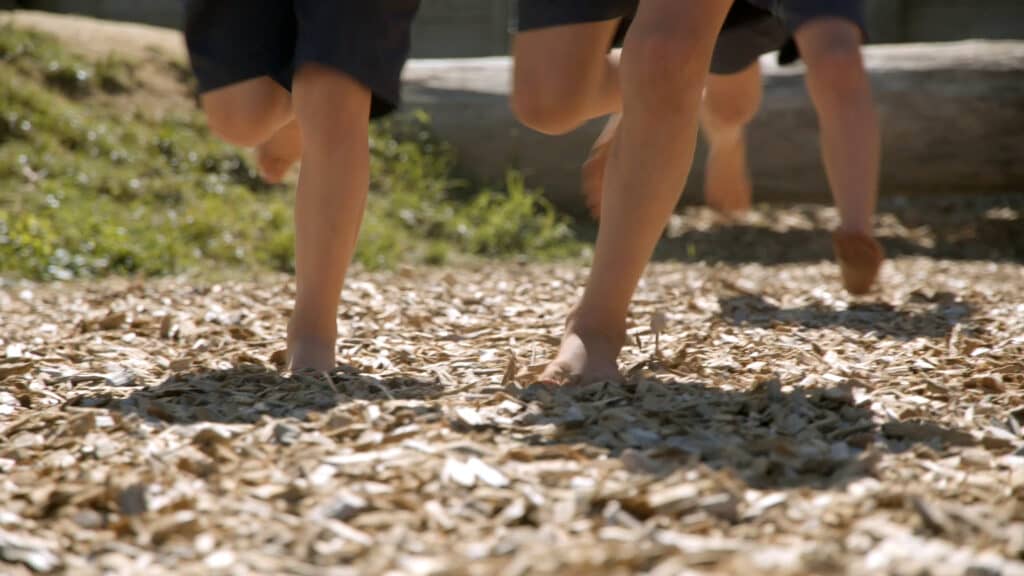Choosing a suitable surface for a playspace is not just a matter of aesthetics. It’s an important decision impacting safety, functionality, and cost-effectiveness.
In this post, we will cover the many playspace surface options and their cost-effectiveness to help you make an informed decision.
Overview of Different Types of Playspace Surfaces
Rubber Mulch
- Price range: For the average 250m2 playspace – between $75,000– $130,000
- Pros: It has a natural look, even though it’s wet pour rubber. It comes in different colours and is a recyclable type of surface. It can be used around trees and other play features to offer safety surfacing from different heights.
- Cons: It can wear faster than other surface types if installed in high-traffic areas. It can also get hot in hot-weather environments, such as sun-exposed areas.
- Longevity: If well maintained, it can last around ten years. After that, it can be recycled into shock pads and re-poured as an underlayer.
Sand
- Price range: For the average 250m2 playspace – between $6000 – $16,000
- Pros: It has a natural look, even though it’s wet pour rubber. It comes in different colours and is a recyclable type of surface. It can be used around trees and other play features to offer safety surfacing from different heights.
- Cons: It can wear faster than other surface types if installed in high-traffic areas. It can also get hot in hot-weather environments, such as sun-exposed areas.
- Longevity: If well maintained, it can last around ten years. After that, it can be recycled into shock pads and re-poured as an underlayer.
Wood Chips
- Price Range: For the average 250m2 school playground – between $6000 – $16,000
- Pros: Natural look, good shock absorption. It can be turned into compost after its use.
- Cons: It’s not inclusive and has a short life cycle. You must maintain it periodically to use it at its full potential.
- Longevity: Needs replacement every 1-2 years.

Artificial Turf
- Price Range: For the average 250m2 school playground, it is $65,000 and $110,000.
- Pros: This surface is low maintenance and stays green year-round. It has a great natural feel, making it inclusive for users of all abilities without heavy maintenance.
- Cons: It has a higher initial cost compared to other surfaces. Also, it can get hot if the sun is exposed and needs sand pouring and grooming to keep it in place.
- Longevity: It can last over 15 years if maintained regularly.
Wet pour rubber
- Price Range: For the average 250m2 school playground, it is $85,000 and $140,000.
- Pros: It is a highly customisable surface with different colours and shapes. It is fully inclusive and lasts a long time. It also has easy drainage and maintenance.
- Cons: Higher upfront cost; it also requires professional installation. Also, it can get hot if it’s exposed to high temperatures.
- Longevity: With proper care, this can last more than 20 years. After its use, it can be recycled into a shock pad underlayer.

Comparative Analysis
Each surface type offers a unique balance of cost, durability, and maintenance. Rubber mulch and wood chips are more budget-friendly upfront but require regular maintenance.
Artificial turf and poured-in-place rubber have higher initial costs but are more durable and low-maintenance, potentially offering better long-term value.
Conclusion
In conclusion, there’s no one-size-fits-all answer to the most cost-effective playspace surface. Each option has its unique benefits and considerations.
We encourage you to weigh these factors against your specific needs and preferences to find the best solution for your playspace.
Remember, the right surface can significantly enhance the safety, functionality, and aesthetic appeal of your play area.


